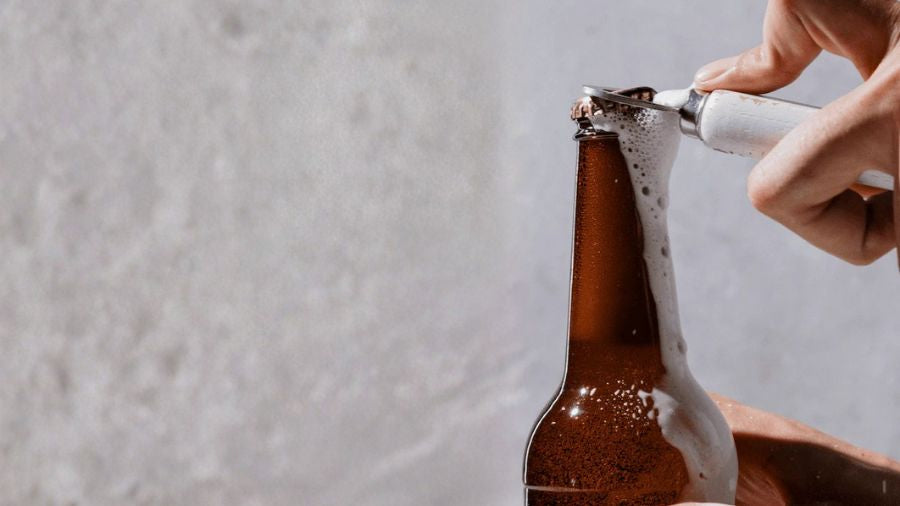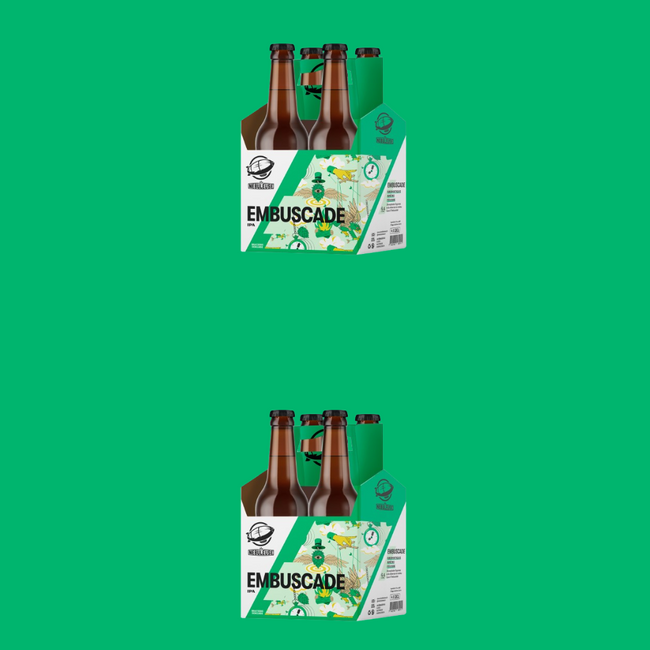Why does natural carbonation change everything?

Have you ever noticed that creamy, persistent head that crowns some craft beers? Those fine, delicate bubbles that dance in your glass, gradually releasing complex aromas? It's no accident, but the result of a traditional process that craft brewers particularly cherish: natural carbonation.
As we discussed in our article on the differences between craft and industrial beer , there are many technical details that separate these two approaches to brewing. The carbonation method represents one of the most subtle but also significant differences. While the industry prioritizes speed and consistency through the forced injection of CO2, many craft brewers prefer to let time do its work, resulting in a more authentic bubble and an enriched taste experience.
Let's dive together into this effervescent world where patience is rewarded with incomparable quality. Let's discover why this often overlooked technical detail radically transforms the experience on the palate and reveals the true soul of a craft beer.
The origins of bubbles: history and principles of carbonation
Natural carbonation is not a recent innovation, but a return to basics. For centuries, before the era of industrialization, all beers acquired their bubbles through this simple but ingenious process: refermentation in the bottle or barrel.
The principle is elegantly simple: at the time of bottling, the brewer adds a small amount of sugar and sometimes fresh yeast. These yeasts, true tireless workers, consume the sugars and naturally produce CO2 which, trapped in the bottle, gradually dissolves in the beer. This process can take from a few days to several weeks, a patience that is the opposite of mass production.
The industrial method, on the other hand, prioritizes efficiency: after complete filtration (eliminating all yeast), the beer is simply injected with pressurized CO2. Within hours, it's ready to be marketed. Fast, predictable, but deprived of the living process that characterizes refermentation.
The difference between these two approaches isn't just technical. As one Belgian brewmaster once said: "Forced carbonation gives beer gas; refermentation gives it soul."
The taste benefits of natural carbonation
The benefits of bottle refermentation go far beyond the simple presence of bubbles. This method profoundly transforms the beer and enriches it in several ways.
First, the quality of the bubbles themselves: finer and more persistent, they create a silky texture in the mouth that sparkling wine lovers will immediately recognize. This delicate effervescence transports aromas more effectively to the nose and stimulates the taste buds differently than aggressive carbonation.
Then, the presence of live yeast continues to positively influence the beer. These microorganisms gradually release new aromatic compounds, allowing the beer to evolve and often improve over time. An Estafette refermented in the bottle can thus develop additional nuances after a few months of aging, similar to what we observe in great wines.
Finally, yeasts act as natural oxygen scavengers, protecting beer from oxidation, which can impair its qualities. This natural protection explains why some refermented beers age so gracefully, gaining complexity without developing the cardboard or wet paper notes characteristic of oxidation.
The delicate art of refermentation
Bottle refermentation is not a technique that can be improvised. It requires precision, experience, and meticulous attention to detail.
The first challenge concerns the dosage of refermentation sugar. Too little, and carbonation will be insufficient; too much, and there is a risk of bottles exploding or, at the very least, geysers upon opening. This dosage must take into account many factors: the amount of residual sugars already present in the beer, the vitality of the yeast, and even the strength of the bottles used.
Yeast selection also presents its share of subtleties. Some brewers reuse the main fermentation strain, while others prefer specific yeasts for refermentation, selected for their ability to operate in an already alcoholic environment and produce complementary flavor profiles.
Temperature control during this phase is equally important. Temperatures that are too low slow the process excessively, while temperatures that are too high can lead to off-flavors or over-carbonation.
This technicality explains why refermentation in the bottle often remains the preserve of craft breweries, whose size and philosophy allow this level of attention to detail and patience in the process.
Recognizing and Appreciating a Naturally Carbonated Beer
How can you identify a bottle-refermented beer? A few clues are unmistakable.
Visually, the presence of a slight yeast deposit at the bottom of the bottle is a telling clue. This deposit, far from being a defect, is a testament to the life that has animated the beer. The bubbles are generally finer and the head creamier and more persistent than with forced carbonation.
When serving, these beers deserve some special attention. Ideally, they should be kept upright for a few hours before tasting , allowing the sediment to stabilize at the bottom. Pouring is done in a slow and continuous gesture, leaving the last centimeter in the bottle (unless you appreciate the more rustic and intense character of the sediment).
On the palate, it's the harmony between effervescence and flavors that immediately strikes. The natural carbonation integrates perfectly with the beer's flavor profile, as if the bubbles were woven into its very structure, rather than added as an afterthought.
When the bubble reveals the soul of the beer
Natural carbonation is more than just a production technique: it's a brewing philosophy that prioritizes patience, authenticity, and aromatic complexity over ease and standardization.
This traditional method reminds us that beer, in its noblest form, is a living product that continues to evolve even after leaving the brewery. It establishes a tangible link between historical brewing practices and contemporary expectations of authenticity and quality.
To fully appreciate these creations, take the time to observe them, to note the finesse of their effervescence, to feel how the bubbles carry the aromas and transform the texture in the mouth.
The next time you enjoy a craft beer, look at the bottom of the bottle – that subtle yeast deposit could well be the signature of a brewer who has chosen the path to excellence, bubble after bubble.









